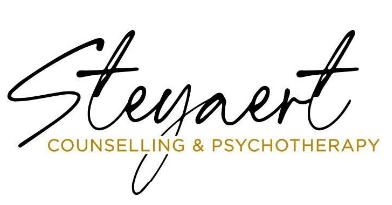
How to Identify and Challenge Negative Thought Patterns: A Practical CBT Guide
Harness the power of cognitive behavioural therapy to overcome anxiety, depression, and unhelpful thinking patterns.
Why This Matters for Therapy for Anxiety & Depression
Every day, our thoughts shape how we feel and act. Left unchecked, negative thinking patterns—cognitive distortions—can:
- Fuel chronic worry and rumination
- Deepen feelings of sadness or hopelessness
- Undermine self-confidence
- Erode the quality of our relationships
CBT is a therapeutic approach that gives you a clear, step-by-step toolkit to interrupt these cycles and build more resilient thinking. Whether you’re in London, Burlington, or anywhere in Ontario via virtual therapy, you’ll walk away with skills you can use right away.
What are Cognitive Distortions?
Cognitive distortions are habitual “thinking traps.” They’re shortcuts our brain takes that often misrepresent reality. Over time, these traps become automatic and can feel impossible to escape—but they can be unlearned.
Key Distortions to Watch for:
Pro Tip: Start a “distortion diary”—jot down each time you spot one, and what triggered it.
See It in Action on TikTok
Curious how these ideas play out in real time? In our TikTok video “Challenging negative thought patterns,” Hannah Steyaert guides you through a live example of spotting an automatic thought—“I’m going to mess up”—and pausing to question it. You’ll learn how to ask yourself, “What evidence do I actually have for this?” and see a side-by-side “before and after” reframe.
Learn to Name the Distortions
In a follow-up clip, “Identifying negative thinking styles,” Hannah breaks down each major distortion—like catastrophizing and mind-reading—using simple, everyday scenarios. By naming the distortion out loud, you’ll start to catch these thinking traps as they happen. Link this short demo to your early homework: as you spot each distortion, pause the video and jot down the trigger.
How CBT Guides You Through Change
CBT breaks the process into manageable steps:
- Notice the automatic thought
- Name the distortion (e.g., “That’s catastrophizing”)
- Gather Evidence
- List facts that support the thought
- List facts that contradict it
- Reframe with a balanced alternative
- Test it in real life (behavioural experiments)
- Review what you learned
Each session with your therapist will include practice exercises and “homework.” Over time, reframed thinking becomes your new habit.
Practical Examples in Action
| Trigger Event | Distortion | Balanced Reframe |
|---|---|---|
| Spilling coffee before a meeting | All-or-Nothing | “Everyone has mishaps. I’ll clean up and focus on my points—you’ve prepared well.” |
| No reply from a friend | Mind Reading | “They may be busy. I’ll give them a day, then send a friendly check-in.” |
| Nervous about public speaking | Catastrophizing | “A small pause won’t ruin the talk. Audiences expect some natural hesitations.” |
| Critical feedback at work | Mental Filter | “They praised my report too. I can use the feedback to improve rather than feel defeated.” |
| Feeling anxious without clear reason | Emotional Reasoning | “Anxiety is an emotion, not a fact. I’ll sit with it and notice it without judgment.” |
Benefits You’ll Gain from CBT
Greater Motivation & Focus: Free up mental energy by ending rumination loops.
Reduced Anxiety & Worry: Learn to catch and challenge “what-if” spirals.
Improved Mood & Confidence: Build evidence-based self-talk that supports you.
Better Stress Management: Equip yourself with tools to respond calmly under pressure.
Healthier Relationships: Communicate needs more clearly when thoughts aren’t distorted.
Role of Therapy in Your Journey
While self-help strategies are powerful, working with a trained CBT therapist amplifies results:
- Personalized Plan: Tailored to your specific thoughts, triggers, and goals.
- Accountability & Support: Regular check-ins keep you on track.
- Deeper Insight: A therapist helps uncover core schemas behind your distortions.
- Skill Mastery: Live practice, feedback, and new techniques each week.
At Steyaert Counselling in London and Burlington, or online across Ontario, our team guides you every step of the way.
FAQ
Can I see progress in just a few sessions?
Many clients notice relief in 4–6 weeks, with deeper shifts by 8–12 sessions.
What if I struggle with the homework?
Your therapist will adjust assignments to fit your pace and comfort level.
Do I need to have a clinical diagnosis?
No—CBT helps with everyday stressors and formal mental-health concerns alike.
Is virtual CBT as effective as in-person?
Research shows online CBT delivers comparable outcomes, with added convenience.
Why Choose Steyaert Counselling?
We personalize every plan to fit your goals and lifestyle:
- No Waitlist in our London and Burlington clinics
- Free Parking at both locations
- Flexible Virtual Therapy across Ontario
- Evidence-based techniques backed by CAMH and APA
Ready to challenge negative thinking? Let’s do this together.
